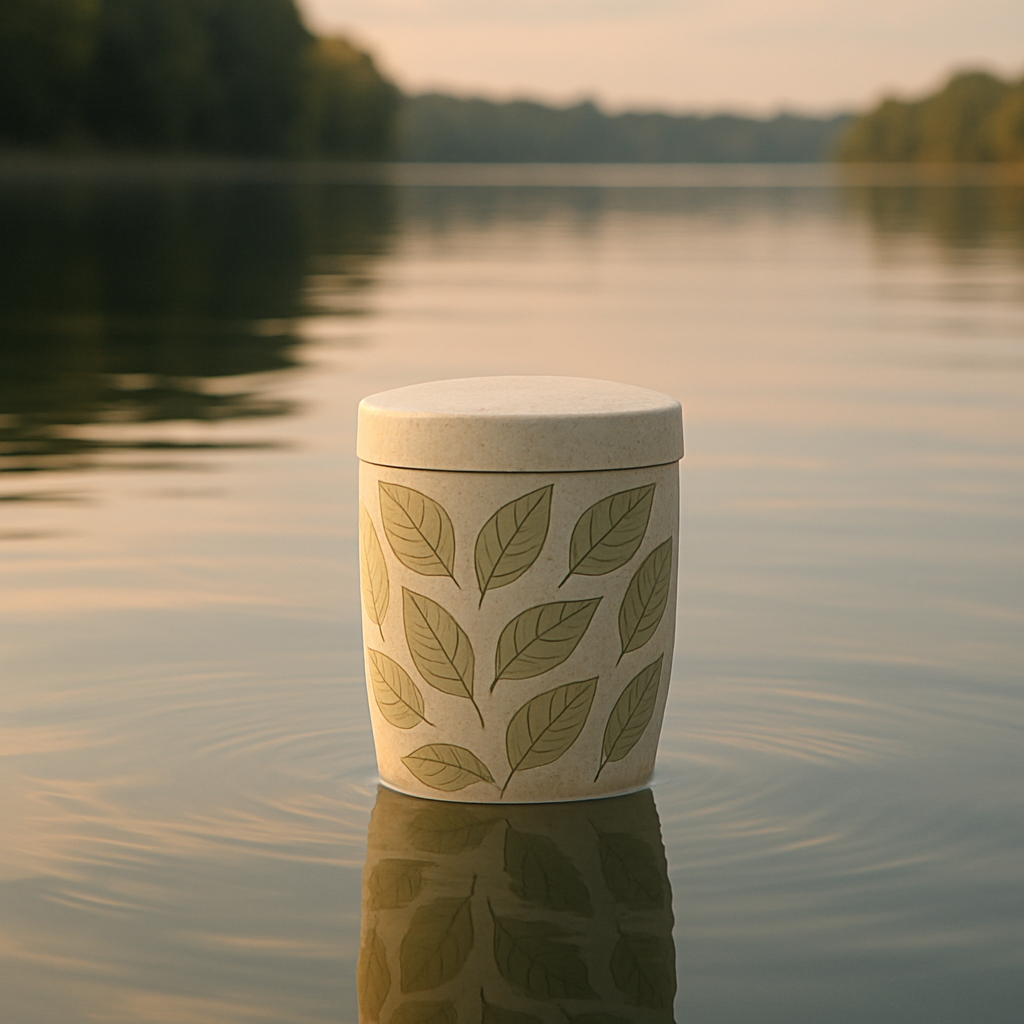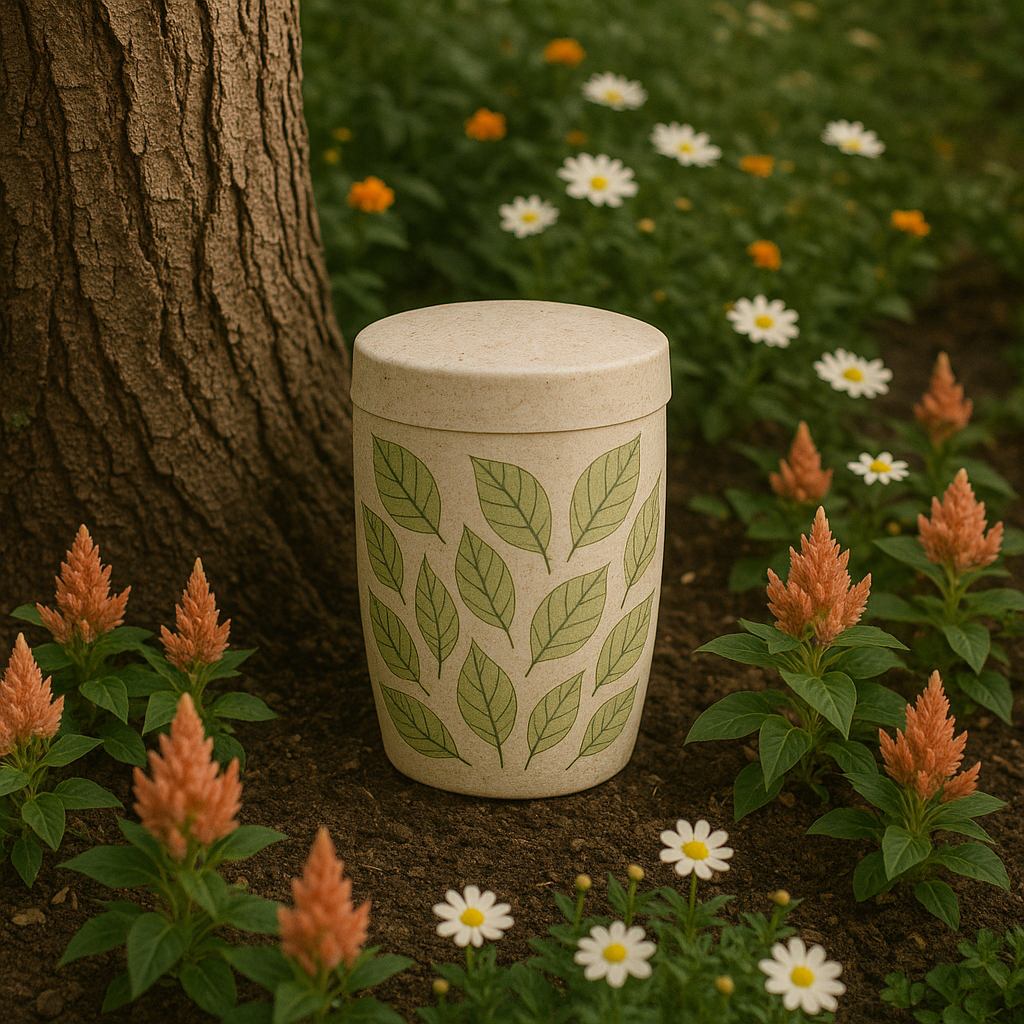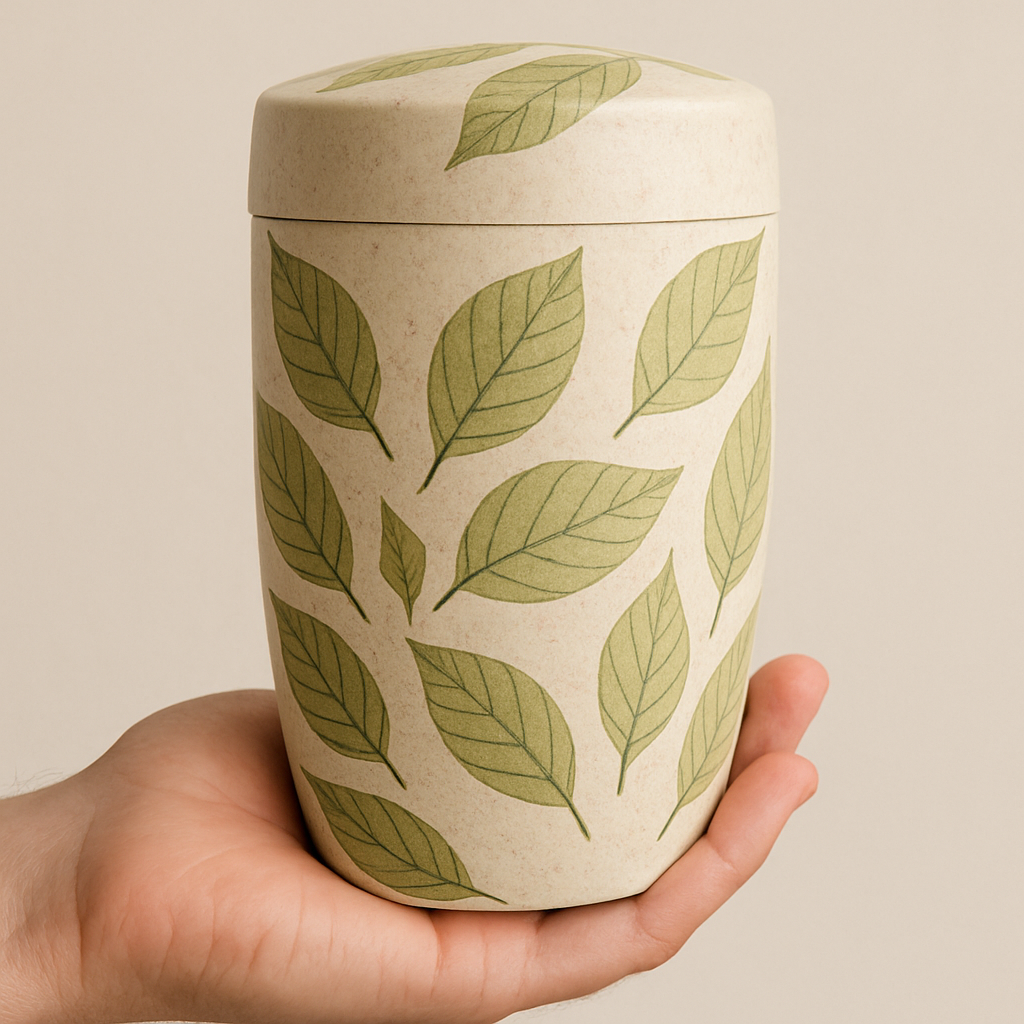Using a biodegradable urn to scatter ashes is a peaceful and environmentally conscious way to say goodbye. These specially designed urns gently break down in nature—whether placed in soil, water, or scattered from hand—making them ideal for those who wish to honor both their loved one and the Earth.
In this guide, we explore the types of biodegradable urns, how to use them, and where they can be used meaningfully.


What Is a Biodegradable Urn?
A biodegradable urn is made from natural materials that decompose harmlessly into the environment over time. Common materials include:
- Paper and cardboard
- Salt or sand
- Coconut shells or bamboo
- Cornstarch, gelatin, or plant-based resins
These urns are designed for burial in soil or water, or for facilitating controlled scattering by hand.
Types of Biodegradable Urns
1. Water Urns
Float on water before gently sinking and dissolving, ideal for sea, lake, or river ceremonies. Often shaped like shells, lotus flowers, or traditional vases.
2. Earth Urns
Made for burial, these urns break down over several months, returning nutrients to the soil. They may contain wildflower seeds or tree saplings for planting memorials.
3. Scatter Tubes
Cylinder-shaped urns made from recycled paper, used to easily and respectfully scatter ashes by hand.


How to Use a Biodegradable Urn
Scattering with a Scatter Tube:
- Select a location with permission
- Check the wind direction
- Twist open the cap
- Gently tilt and scatter in a smooth arc
Placing in Water:
- Lower the urn gently onto the water’s surface
- Allow it to float and sink naturally
- You may toss flowers or petals as part of the tribute
Burying in Earth:
- Dig a hole about 1–2 feet deep
- Place the urn inside
- Cover with soil and optionally plant flowers or a tree
Memorial Ideas and Personal Touches
- Write messages or names on the urn with natural ink
- Decorate with pressed flowers, ribbons, or biodegradable paints
- Hold a short reading or play music before releasing
- Invite guests to share memories or light candles (battery-powered for safety outdoors)
These urns allow for meaningful, low-impact ceremonies in nature.
Legal and Environmental Considerations
Biodegradable urns are generally welcomed in parks, gardens, and at sea. However:
- Always seek landowner or authority permission for public places
- Confirm local rules for water burials or tree plantings
- Choose an urn free from synthetic coatings, dyes, or plastics


